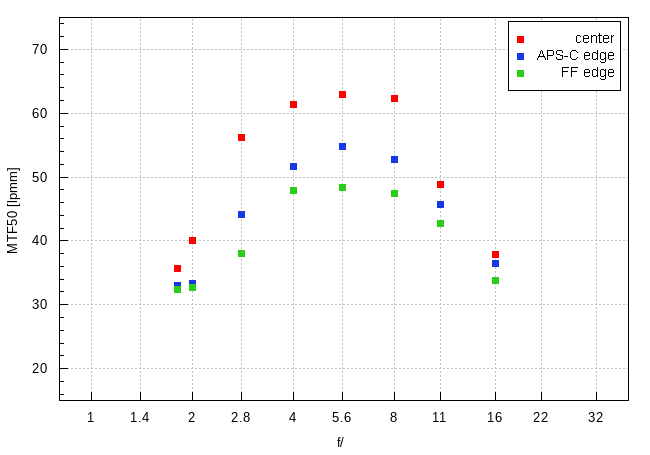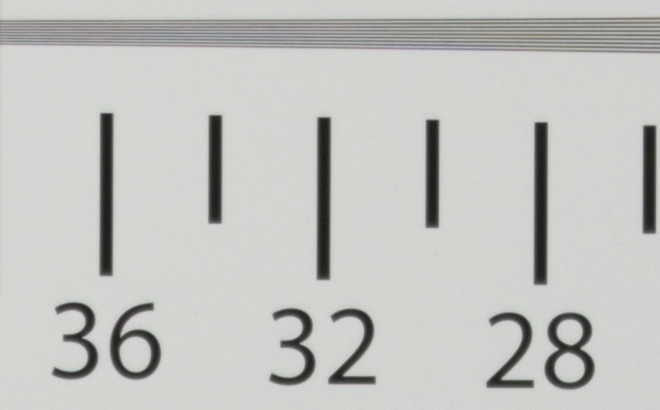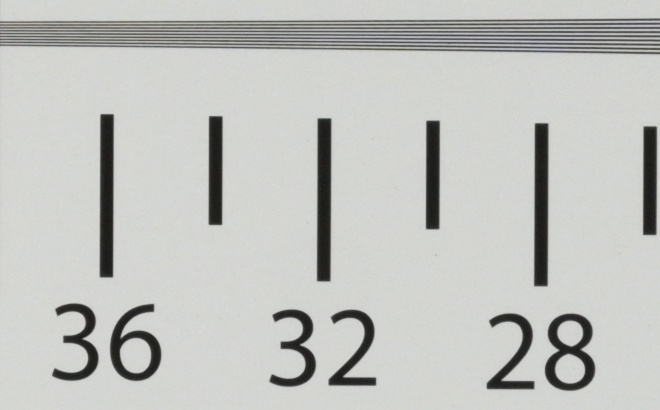Viltrox AF 50 mm f/1.8 FE / Z
4. Image resolution
Let's check how the Viltrox AF 50 mm f/1.8 Z compares – its results in the frame centre, on the edge of the APS-C/DX sensor and on the edge of full frame presents a graph below.

Please Support UsIf you enjoy our reviews and articles, and you want us to continue our work please, support our website by donating through PayPal. The funds are going to be used for paying our editorial team, renting servers, and equipping our testing studio; only that way we will be able to continue providing you interesting content for free. |
- - - - - - - - - - - - - - - - - - - - - - - - - - - - - - - - - - - - - - - - - - - - - - - -
One glance and you know that the performance of the tested lens is average at best. In the frame centre by f/1.8 and f/2.0 images are of weak quality and they become decent only near f/2.2. From f/2.8 upwards you deal with good levels but even by f/4.0 and f/5.6 image quality doesn't bowl you over.
On the edge of the APS-C/DX you have to stop the aperture down to almost f/2.8 in order to get images of decent quality; on the edge of full frame that value increases to f/3.5. These results are certainly not worth a good prime.
I doubted whether the Viltrox AF 50 mm f/1.8 Z would be able to compete on equal terms with the Nikkor Z 50 mm f/1.8 S from the very beginning – after all the Nikkor is one of the sharpest devices in the system. Now I see the problem is different – the Viltrox is not able to compete even with the cheaper, slower Nikkor Z 40 mm f/2.0 made of plastics. In fact, while testing old gauss 6-7 element lenses I've seen resolution values higher than these of the Viltrox. It's obvious the Viltrox didn't do an especially good job in this area.
At the end of this chapter, traditionally, we present crops taken from photos of our resolution testing chart which were saved as JPEG files along the RAW files, used for the analysis above.
| Nikon Z7, JPEG, f/1.8 |
 |
| Nikon Z7, JPEG, f/5.6 |
 |






